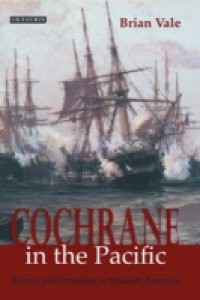In 1818, the revolutionary government of Chile was poised to attack Peru, the last bastion of Spanish power on the continent. Until then, the liberation of South America had been dominated by the clash of armies, on land. But the need to move the army of General Jose de San Martin up the coast made it necessary to seize control of the Pacific. The new ruler of Chile, the half-Irish Bernardo O'Higgins, threw his energies into creating a navy. Short of local naval manpower, the Chileans looked to Britain and the United States for the sailors needed to man and command their squadrons, many of them unemployed veterans of the Royal Navy. As the new navy's commander-in-chief, they recruited one of the most fearless and controversial officers of the age: Thomas, Lord Cochrane. The war brought out the best and the worst in Lord Cochrane. Its huge panorama gave ample scope for his aggression, bravery and flare. But high command also produced tensions and problems that brought out the negative side of his suspicious and troubled personality. The story of the naval war in the Pacific is an exciting one. Under Cochrane's audacious leadership, coasts were blockaded, fortresses stormed and ships seized in bloody hand-to-hand fighting. The result was that Chile and Peru gained their freedom from Spain, while Cochrane enhanced his reputation and made a fortune in pay and prize money. For one hundred and fifty years, the accepted story of the war has been based on Cochrane's own version of events and the allegation that all these victories were achieved in the face of disloyalty, plots and treachery. How accurate is Cochrane's account? And what really happened in the war at sea? To answer these questions, Brian Vale goes back to the original documents, despatches, diaries and newspapers. The result is a new and vivid account of the war in the Pacific and a reassessment of one of Britain's legendary naval heroes seen at the peak of his career.

